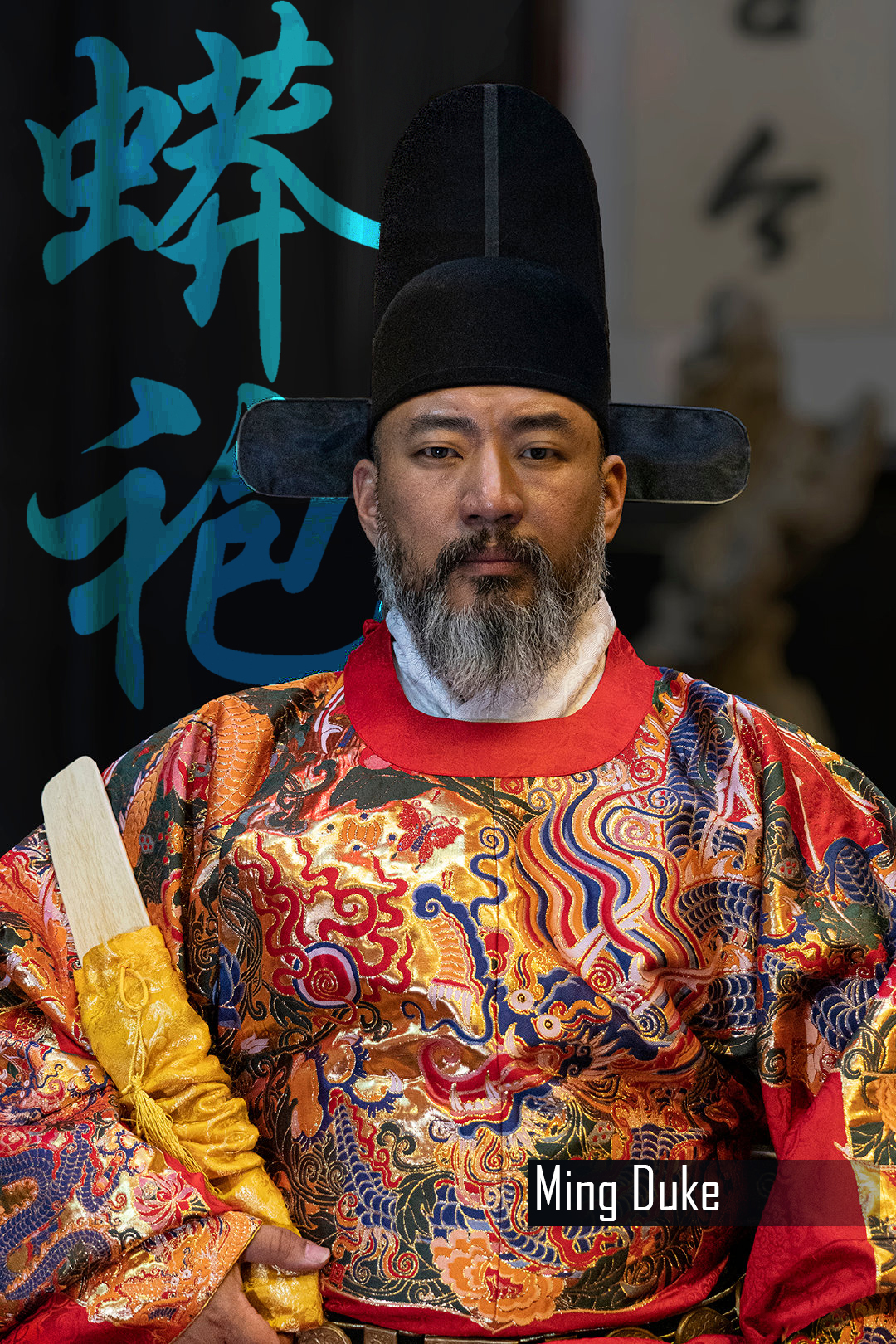Tang Prince in Round Collar Robe: 唐君圆领衫
Model: 山中竹月
Music: Tang dynasty Nostalgia
Ornate Tang styled Yuanling Shan- or "Round Collar Robe," Yuanling Shan were worn by most male of the era, from common citizens to imperial monarchs. Some women also wore yuangling Shan as well, including servants, merchants, and when the noble women participated in polo games or other festivals that required equestrian displays.

Early Tang female and male in simple "Hu"胡 clothing that were heavily influenced by Central Asian culture. Sui and Tang dynasties derived their northern traditions from nomadic cultures and thus the genders had far greater equality than later dynasties. Women of this era were free to participate in a number of jobs in society and were allowed to inherit their families' properties on their own right. They also actively participated in the cultural and political arena as well. Both the round collar robe and the open lapel robes served as riding jackets.
One of the most famous gingko tree in China is located in a district of Xi'an (in ancient times the capital of Tang dynasty called Chang'An) the tall 1,400 year old gingko tree, which turns golden every year was traditionally said to have been planted by the Taizong emperor (598-649) himself.

Thank you to my Patrons who has contributed $10 and above: You made this happen!
➢ ☯ MK Celahir
➢ ☯ Muramasa
➢ ☯ Thomas Vieira
➢ ☯ Kevin
➢ ☯ Vincent Ho (FerrumFlos1st)
➢ ☯ BurenErdene Altankhuyag
➢ ☯ Stephen D Rynerson
➢ ☯ Michael Lam
➢ ☯ Peter Hellman
➢ ☯ SunB























Comments
What is surprising is the extent of Persian influence on China, you would think the Chinese would not be susceptible to Persian influence like the Arabs and Turks.
By the time Sui unified north and south China both sides had a cultural shock with each other, Southern fashion and rituals became the rage in the north after Emperor Wen brought the defeated southern court as guests north. And conversely southern China were astounded by the Hu cultures of the north. During the Sui dynasty Chang An and northern China had a very large Persian~ well, Iranian community there. And this persisted well on to the Tang.